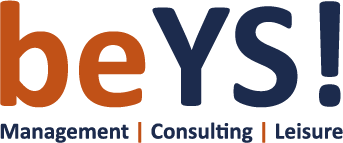The book that is gross (GBV) associated with the e-mobility sector, led by Ola, Uber, Rapido, as well as others, recovered from $259 million in January 2020 to $164 million in January 2021 with 83 percent associated with the value from the top seven metros including Delhi, Mumbai, Kolkata, among others.
Cyber assault: ‘reasons behind startups’ information breaches exceed not enough focus on securing apps, sites
Cab-hailing solutions or online cab scheduling Alaska title loans market, led by Ola and Uber, proceeded to witness the best post-Covid data recovery price when compared with on-demand auto and bike-sharing services. Although the cab scheduling section were able to get over around 21 percent (of January 2020 degree) in September this past year to 54 per cent in January 2021, interest in auto-booking solutions recovered from 48 % to 83 %. Likewise, the bike-sharing vertical into the e-mobility sector additionally posted a healthy recovery from 40 percent to 62 percent throughout the said duration. The general sector witnessed data recovery from 31 % in September to 63 percent regarding the pre-Covid degree in January 2021, based on the information through the management consulting company RedSeer for the particular months.
The data recovery when it comes to car and bicycle portion could mostly be related to less threat of contraction, mid-to-long distance travel in a town such as for example home-office drive dramatically nevertheless muted, additionally the affordability quotient also for faster commutes amid tough task market and wage cuts as a result of the pandemic. “Unlike vehicles, bikes are available and through the Covid viewpoint, interior is more high-risk than outside. Additionally, bikes are intended for a shorter duration. Therefore, the likelihood of contraction are lower compared to cabs. When it comes to cabs, large amount of customers may went back to hometown and may even perhaps not get back until workplaces resume. This might affect the data recovery of four-wheeler booking,” said Yugal Joshi, Vice President at Texas-based consultancy Everest Group had told Financial Express on line.
Away from 113 million e-mobility trips, including cabs, autos, bikes, in January 2020, the sector recovered to 71 million trips in January 2021. Post-March-lockdown, the solutions had been delivered to a complete halt before the federal government had permitted Ola and Uber to resume solutions in might in numerous green and orange areas associated with nation. From the 113 million trips, 66 million had been cab trips, 19 million belonged to bike-sharing, and 28 million had been automobile rides in January 2020. one year later on, cab trips reached the 36-million mark while bike and auto trips endured at 23 million and 12 million correspondingly. Back in out of 35 million rides, around 15 million were cab rides, approximately 8 million rides belonged to bike-sharing and around 12 million rides were for autos september.
The book that is gross (GBV) associated with the e-mobility sector, which endured at $259 million in January 2020 happens to be in a position to recover to $164 million in January 2021 with 83 percent of this value from the top seven metros including Delhi, Mumbai, Kolkata yet others, RedSeer information revealed. When compared with how many trips, 75 percent originated from these metros marginally up from 72 % in 2021 january.
Notably, the Ministry of Road Transport and Highways had granted the car Aggregator tips in November year that is last allowed вЂaggregator’ segment mainly managed by Ola and Uber to charge fare “50% less than the bottom fare and a maximum Surge rates of 1.5 times the beds base fare.” The principles had maintained that this can “promote asset utilisation which was might idea of transportation aggregation and additionally substantiate the pricing that is dynamic, that will be relevant in ensuring asset utilisation relative to industry forces of need and offer.”
